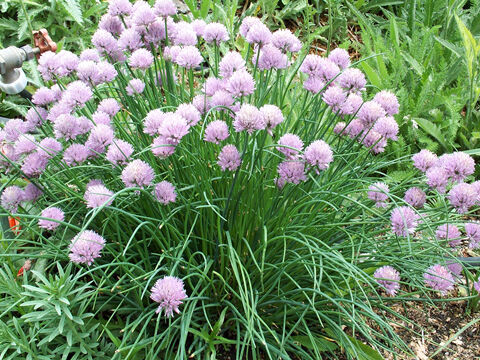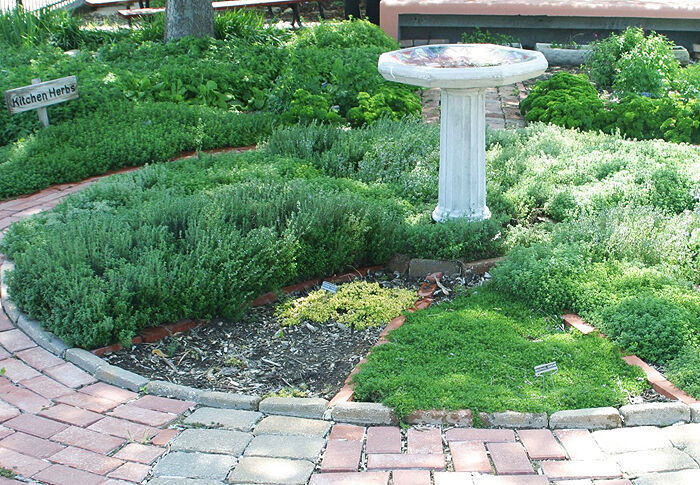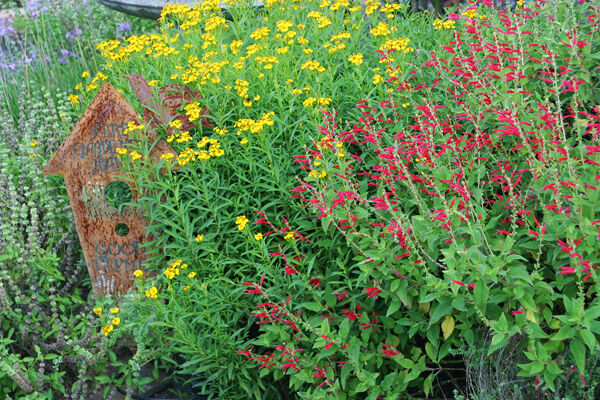Herbs are wonderful plants with a lot to offer in our gardens and landscapes. In addition to their many culinary (and medicinal) benefits, herbs can be absolutely beautiful.
Mention an herb garden, and most people picture the traditional geometric-style herb gardens of a formal landscape. I prefer to simply mix them into the vegetable garden, flower beds or the landscape. I like to include herbs at the ends of the beds in the vegetable garden, such as basil, oregano and garlic chives in a row of tomatoes, otherwise known as the pesto and pizza sauce row.
If you prefer to plant all your herbs in one area but don’t care for formal designs, a less orderly cottage-style planting may be the way to go. However you go about it, an herb garden invites visitors to slow down and stop to smell the ... well, the rosemary.
Low-trailing herbs make great groundcovers. A tidy ground-hugging carpet of thyme or oregano can turn an otherwise bare patio bed into a culinary stop. Chives, salad burnet and parsley form compact mounding plants that work well lining a walkway or around the perimeter of an ornamental bed. Compact forms of basil can do the same during the spring to fall season.
Rosemary makes a great evergreen, drought-resistant shrub, and the prostrate forms, which bloom more than the upright types, are quite decorative spilling over a landscape wall or large container. Other trailing herbs like thyme and oregano also make great spillover plantings.
Some herbs work well as specimen plants. The broad foliage and upright stems of Goriza rosemary make a statement year-round as the centerpiece in a bed of flowers. I love the wispy foliage of bronze fennel. Used as a backdrop to low-growing plants, its dark purplish-bronze color makes a dramatic visual impact of color and texture.
Mexican mint marigold is another specimen herb. With the arrival of fall, it sends up its upright shoots with clusters of golden yellow blooms, making it a focal point in the garden. Pineapple sage’s tubular red blooms are both beautiful, and according to hummingbirds, tasty too.
A bay tree, generally grown as a large shrub in our climate, is an outstanding evergreen specimen plant. You can grow more bay leaves on one decent sized bay shrub that the entire Brazos Valley can use in a year!
Herbs are especially well suited to containers. This increases their versatility. By selecting containers of various shape and sizes, you can create a grouping to turn a porch, patio or walkway into a beautiful garden spot. One nice thing about containers is that they can be removed and replaced when something needs to be replanted.
Mint is a wonderful herb to grow but is notorious for spreading in all directions as it conquers surrounding plantings, expanding its kingdom. A large container makes a great way to have your mint and contain it, too.
I like placing herb containers around a patio area where you can reach out and enjoy their fragrant foliage. One of my daughters used to like to hug our topiary rosemary plants. When she passed through the house, the air was filled with the aroma.
Herbs offer another benefit not often mentioned in articles promoting their use. They can be quite attractive to beneficial insects. Look closely at the tiny bloom stalks of thyme or cilantro, the daisy-like blossoms of chamomile, or the umbrella bloom clusters of fennel, tansy or dill, and you’ll notice a host of tiny parasitic and predatory wasp species, hover flies and predatory beetles and true bugs stopping in for a meal of pollen or sip of nectar.
Various bee species find the blooms of many types of herbs quite attractive. African blue basil is one of the best plants for providing nourishment for native bees and honeybees. The blossoms of chives are another pollinator magnet.
Fall is prime planting season for the many types of perennial herbs available to gardeners. If planted now, they will have a head start and become well established before hot weather returns next summer.
Prepare the soil for an herb garden as you would for a vegetable or flower garden. Select a sunny, well-drained location. If drainage is not excellent, build up a raised planting area to avoid soggy root conditions. Mix an inch or two of compost into the soil before planting.
If you want to get a start on adding herbs to the landscape but are not able to prepare a garden spot right away, a container that is a little larger than the one the herb came in can serve as a temporary home for a few weeks or even longer.
A bright area very close to a window can also serve to babysit some basil, an annual herb that detests even moderately cold weather, or keep a new perennial herb plant happy while you prepare its new home outdoors.
Robert “Skip” Richter is the Texas A&M AgriLife Extension Horticulture Agent for Brazos County, 2619 Texas 21 W., Bryan, Texas 77803. For local gardening information and events, visit brazosmg.com. Gardening questions? Call Skip at 823-0129 or email rrichter@ag.tamu.edu.
Get local news delivered to your inbox!
September 25, 2020 at 12:00PM
https://ift.tt/305s0bx
SKIP RICHTER: Fall season is prime time for planting herbs - Bryan-College Station Eagle
https://ift.tt/3eCf9lu
Herb




No comments:
Post a Comment